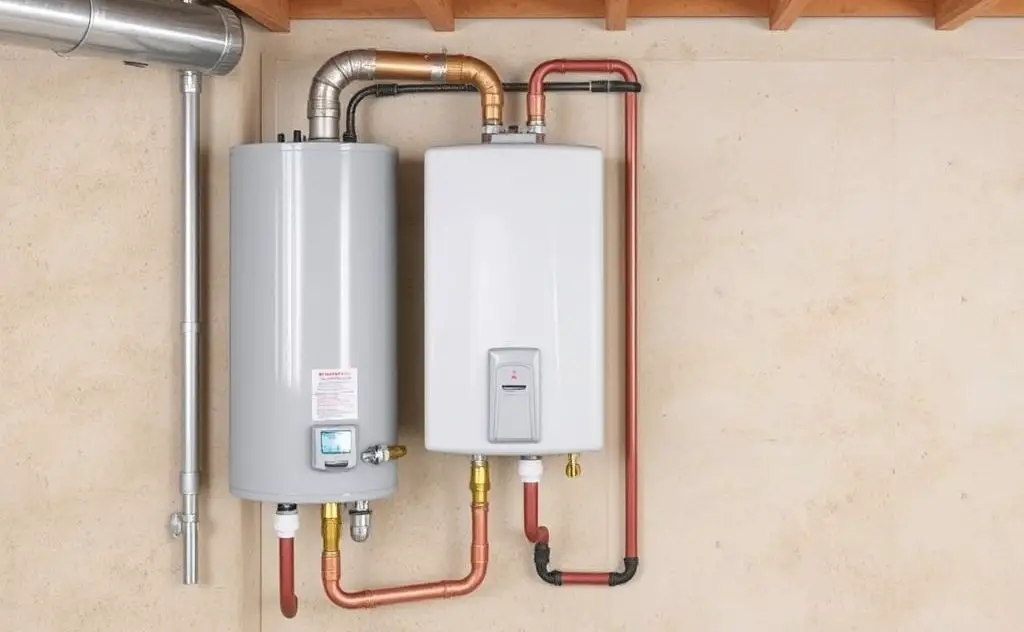Yes, you can vent a gas water heater through a wall, but it must comply with local codes and manufacturer’s instructions for safe installation.
Venting a gas water heater through a wall is possible, but strict safety codes and proper materials must be used. The type of water heater and venting system determines whether sidewall venting is allowed.

Gas Water Heater Venting Requirements
Proper venting is critical for gas water heaters to prevent carbon monoxide buildup. There are three main types of venting systems:
- Atmospheric Venting: Uses natural draft through vertical metal piping (B-vent)
- Power Venting: Uses a fan to push exhaust through PVC piping
- Direct Venting: Sealed combustion system with coaxial piping
When Wall Venting Is Allowed
According to the National Fuel Gas Code:
| Water Heater Type | Wall Venting Allowed? |
|---|---|
| Standard Atmospheric | No – must vent vertically |
| Power Vent | Yes – with proper materials |
| Direct Vent | Yes – designed for sidewall |

Proper Materials for Wall Venting
When venting through a wall, you must use approved materials:
- PVC piping for power vent units (minimum 2″ diameter)
- Stainless steel AL29-4C for condensing units
- UL-listed coaxial vent pipes for direct vent systems
Never use dryer vent hose or other unapproved materials. The proper check valves must also be installed to prevent backdrafting.
Installation Requirements
Key installation factors for wall venting:
Clearance Distances
- 12 inches minimum from windows/doors
- 3 feet from air intake vents
- 4 feet vertical clearance above grade
Termination Requirements
- Use a listed vent cap with bird screen
- Maintain 1/4″ per foot slope back to unit
- Install proper thermostat controls
Professional Installation Recommended
Due to the complexity and safety risks, wall venting should be performed by a licensed professional. They will:
- Verify local code compliance
- Calculate proper vent sizing
- Install correct termination fittings
- Test for proper draft and operation
According to Hart & Cooley, improper venting is a leading cause of water heater failures and safety hazards.
Alternatives to Wall Venting
If wall venting isn’t feasible, consider:
- Converting to a power vent water heater
- Installing a direct vent model
- Running vertical venting through the roof
- Switching to an electric water heater
For more information on water heater components, see our guide to water heater element wrenches.
